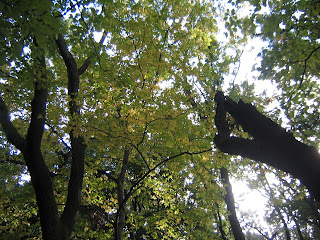Now we are approaching to the season of acorns.
So, in this post, I report my cooking adventure of acorns last year. Actually,
I nurtured my ambition for eating acorns that can be found very easily in almost
any forests of Yokohama. They looked so appetizing. My ambition grew year by
year …
There were several excavations of prehistoric
settlements in Japanese archipelago where researchers found numerous evidences
of our ancestors eating nuts, acorns inclusive. Meanwhile, some of my friends
told me their mums warned not to cook or eat acorns since “They are bad for
your memorizing skills!” Hmmmmmmmmmmm … are they a kind of tranquilizer? Another
friend taught me eating acorns are quite common and traditional in Tohoku area
of Japan and in Korean peninsula. The most traditional Korean recipe is dotorimuk
(or tot'orimuk), i.e. acorn jelly, she said. Well, at least, they are
edible, then. Last year, a book was published from Yamakei Library, titled
“I’ll be a stone-age man!” written by Hideki Sekine (2014,ヤマケイ文庫「縄文人になる!縄文式生活技術教本」関根秀樹著). There, Sekine explains how to cook acorns. Хорошо! So, I
followed his instructions at first …
1. I collected acorns.
I’ve been to the forest of 2014 Art Exhibition in the Forest of Yokohama, and
collected acorns of sawtooth oaks for
about 2kg. That forest had many other acorns as well, but I thought large
acorns of sawtooth oaks were “cost effective.” It was INDEED so. |
| Sawtooth oaks |
 |
| and
beneath. There was one of the installations for 2014 Exhibition, “Wind Communicator” by Katsuyuki Ishiyama and Takeshi Fududa. |
2. I washed acorns.
At this stage, I discarded acorns with cracks and
warm holes.
3. I soaked acorns in fresh water for 3 days.
I
changed water in the morning and evening. I thought peeling the skin of acorns
would be similar to peeling the skin of chest nuts. Some of those worms within
the acorns came out and drowned. Amen.
 |
| Water became brownish, though transparent. |
4. I peeled the skin of acorns, and soaked the
skinned acorns in fresh water again for about 1 week.
What I learned: Acorns are very hard to skin. All
of my fingers got blistered, and the scars remained until spring. In the
process, I beheaded several worms hided within the nuts … Amen, amen. I changed
water every morning and evening as before.
5. When the water became somehow less brownish, I
crashed the acorns in the food processor, and soaked the acorn meals again for a week.
I several times strained the meal by cheese cloth,
and returned them to the clean water. Up to this point, it was as written in
the book. The water became somehow transparent in the morning after a week or
so, but still brownish, which Sekine did not mention. So, I decided to take the
matter in a different direction from the book. |
| The
water was murky immediately after soaking the acorn meal. |
 |
| A week later |
6. I decided to boil the acorn meals.
The
acorn meals rendered lots of lye. So probably what I did was not that bad.
 |
| The pan was full of lye. |
7. When the pan reached to the boil, I removed it
from the heat, and strained the acorn meals with cheese cloth.
After letting
it cool, I stored it in a Ziploc bag. 2kg acorns became 650 g acorn meal.
 |
| Immediately after heating |
 |
| Acorn
meal in a ziploc (er, well, IKEA bag, really) |
The
acorn meal I made was probably too coarse for making dotorimuk; it did not
settle. I mixed it with agar powder for the muk. The taste was … very light (or
“no taste at all”). It was strange because the acorn meal itself remained
somehow oily after boiling. It may be because of agar. I did not use all the acorn meal for dotorimuk.
They kept well in the freezer, and I used the remaining meal for “Acorn Bread”
later in winter. I substituted bananas with acorn meal for the standard recipe of
banana bread. The bread had a distinctively nutty flavor, which was different
from any other bread. Success!






No comments:
Post a Comment